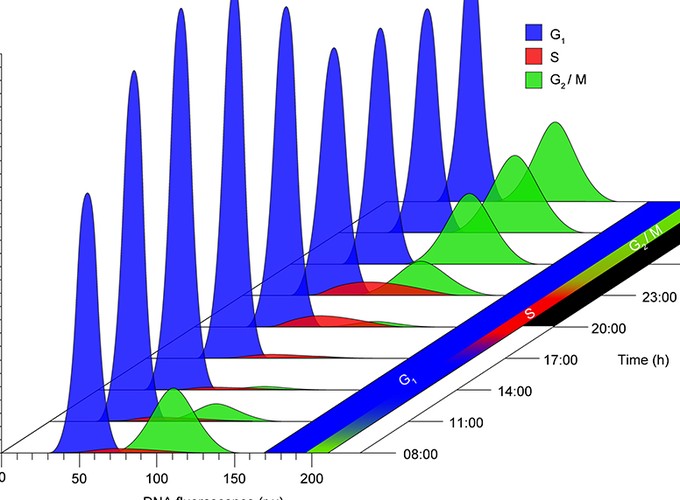Cell Cycle Dynamics of Cultured Coral Endosymbiotic Microalgae (Symbiodinium) Across Different Types (Species) Under Alternate Light and Temperature Conditions
Abstract
Dinoflagellates of the genus Symbiodinium live in symbiosis with many invertebrates, including reef‐building corals. Hosts maintain this symbiosis through continuous regulation of Symbiodinium cell density via expulsion and degradation (postmitotic) and/or constraining cell growth and division through manipulation of the symbiont cell cycle (premitotic). Importance of premitotic regulation is unknown since little data exists on cell cycles for the immense genetic diversity of Symbiodinium. We therefore examined cell cycle progression for several distinct SymbiodiniumITS2‐types (B1, C1, D1a). All types exhibited typical microalgal cell cycle progression, G1 phase through to S phase during the light period, and S phase to G2/M phase during the dark period. However, the proportion of cells in these phases differed between strains and reflected differences in growth rates. Undivided larger cells with 3n DNA content were observed especially in type D1a, which exhibited a distinct cell cycle pattern. We further compared cell cycle patterns under different growth light intensities and thermal regimes. Whilst light intensity did not affect cell cycle patterns, heat stress inhibited cell cycle progression and arrested all strains in G1 phase. We discuss the importance of understanding Symbiodinium functional diversity and how our findings apply to clarify stability of host‐Symbiodinium symbioses.
